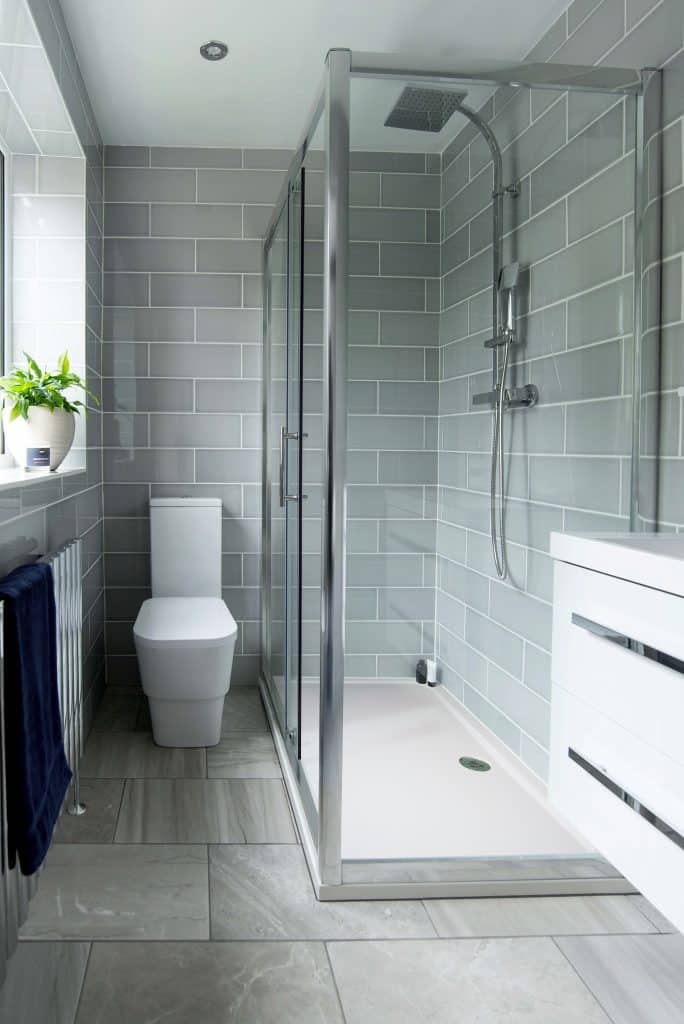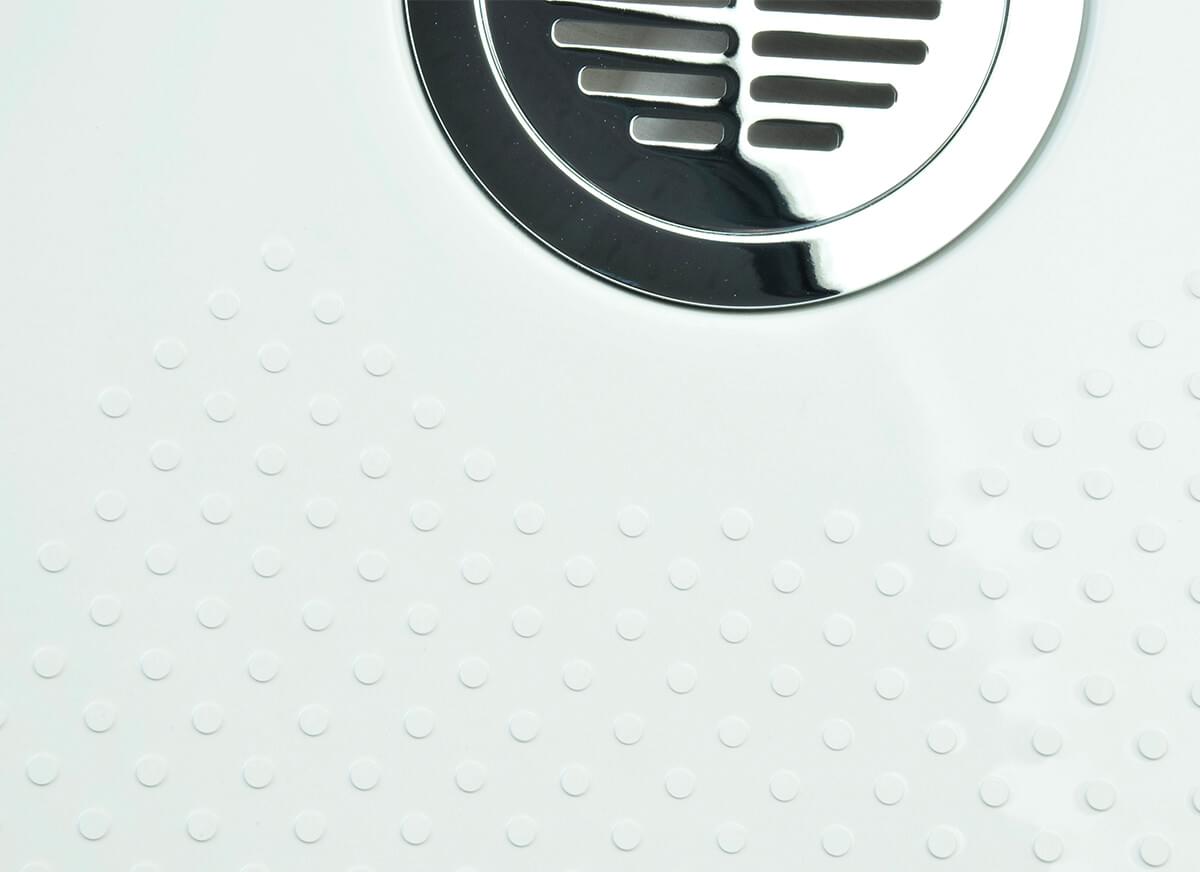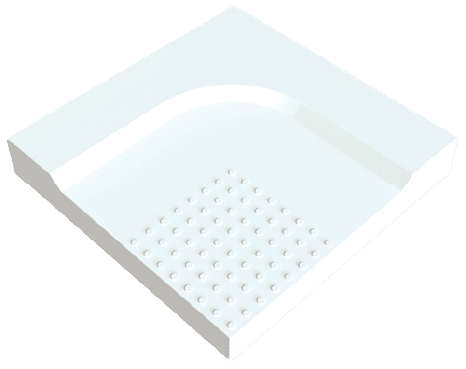
What is an Anti-Slip Shower Tray?
When you’re in the market for an anti-slip shower tray, the lack of comprehensive information can leave you uncertain about what is an anti-slip shower tray and how to choose the right type. Understanding what anti-slip is and its significance can help you make an informed decision for a safer showering experience.
Defining Anti-Slip:
Anti-slip refers to a design specifically crafted to prevent slipping or to remain stationary. In the context of shower trays, this feature becomes crucial to avoid slips and falls during a shower, considering the inherent slipperiness of the shower environment.
What is an Anti-Slip Shower Tray:
Anti-slip shower trays are designed with either a specially applied coating or an integrated anti-slip design to enhance safety (Read more about this). Their purpose is to prevent accidents caused by the slippery conditions created during a shower and the use of products in the process. Choosing an anti-slip shower tray is a proactive step towards preventing slips and falls, especially for vulnerable individuals or those seeking a secure and worry-free showering experience.

Regulations and Standards for Anti-Slip Shower Trays:
In Europe, for domestic purposes, traditional shower trays must adhere to specific manufacturing standard regulations, notably the CE marking in compliance with EN 14527. However, when it comes to ‘anti-slip’ shower trays, there are no further mandatory regulations or standardised testing procedures, which can lead to a confusing buying experience.
The Challenge with Marketed ‘Anti-Slip’ Trays:
The absence of standardised regulations means that any shower tray can be advertised as “anti-slip”. This unfortunate reality highlights the importance of being well-informed and discerning when selecting the right anti-slip shower tray for your needs.
SENSTEC’s Integrated Anti-Slip Design:
At SENSTEC, we have taken a different approach to ensure that our anti-slip shower tray genuinely delivers on its promise. Our design incorporates anti-slip properties directly into the tray during the manufacturing process, rather than relying on an applied coating. The integration of “dimples” within the tray ensures that the anti-slip properties will remain effective for the entire lifespan of the shower tray. This is just one of the advantages of a SENSTEC Anti-Slip Shower Tray. Our product was developed through years of research to achieve the perfect combination of dimple shape and spacing. Only when we achieved exceptional anti-slip performance while maintaining effortless cleaning and comfort underfoot were we satisfied with the design. Read more about cleaning anti-slip

Consistency and Reliability:
SENSTEC trays are shaped in a mould and made by hand, ensuring that each tray is identical. Following completion, each SENSTEC tray undergoes an in-depth inspection process to meet our high standards.
This consistency ensures that a new SENSTEC tray will have the same anti-slip properties as when it was 1, 3, or 10 years old. In addition, our dimples are designed to allow dirt to be carried away with the water, preventing them from becoming slippery. So, as long as the tray is cleaned like a normal tray, its anti-slip effectiveness will not diminish.
Putting SENSTEC to the Test:
At SENSTEC, we don’t solely rely on our claims; we subject our products to rigorous testing. Our anti-slip shower tray successfully underwent both the Pendulum and Barefoot Ramp tests.
In the Pendulum test, a score of 36 indicates a 1 in 1 million chance of slipping. SENSTEC achieved an average score of 48, an off-the-scale result, earning the design a spot in the Low Slip Potential category. Read more about the Pendulum Test
Similarly, the Barefoot Ramp test requires a score of 24 degrees for the best classification (Category C). SENSTEC surpassed this requirement, recording an average of 30 degrees, further validating the effectiveness of our anti-slip properties.
Summary:
Anti-Slip shower trays offer the best, least intrusive way to make your showering easier and safer. They come in many forms, varying in price and level of maintenance, but any type of anti-slip can improve your showering experience if properly maintained.
Adding stickers, paints, or mats to the tray after manufacture is a quick fix, but they will require reapplication/replacement and must be kept clean to avoid slipperiness, which is a time-consuming process.
Building the anti-slip into the tray is a more reliable, consistent solution that would involve fitting a new tray.
When choosing, consider the “Barefoot Ramp Test,” arguably the best test for evaluating the effectiveness of an anti-slip. If the tray you’re considering lacks a test rating, consider why that might be.
As a benchmark, SENSTEC has barefoot ramp test results of 30 degrees. Also, think about how easy the solution will be to maintain; if it appears that dirt and grime could get trapped, then this will become unsightly and, in turn, become slippery.
Still got questions that need answering?
Click the title to get started


